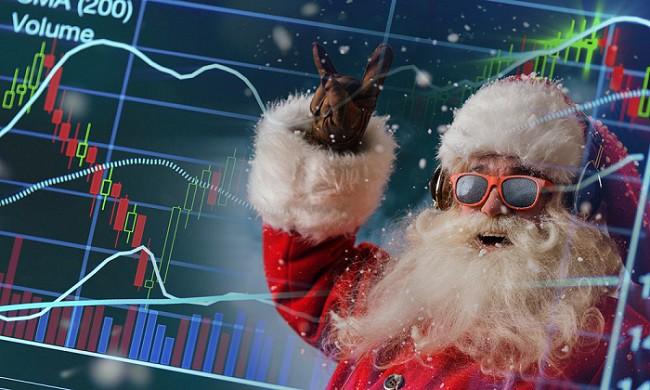A feast of negative headlines over the weekend is dampening sentiment at the start of the week as equity markets slide between one and two percent in Europe.
The US isn’t looking any better, with the open seen piling further misery on Friday’s performance. It’s hard to read too much into the moves at the moment, despite the clear dip in sentiment over the last couple of days.
Is this really omicron nerves as Europe imposes further domestic and travel restrictions, even embrace lockdown in the case of the Netherlands? Or a negative response to the hawkish shift from central banks around the world which was expected before and initially received a positive response?
Or is it disappointment at President Biden’s Build Back Better plan collapsing in a heap after Senator Joe Manchin withdrew his support for the $2 trillion package? That will certainly shave a little off growth next year and is a hammer blow to the Democrats ahead of the midterms.
Or is it more simple than that? The festive season is upon us; perhaps traders are turning the laptops off, traveling, spending time with family, and binging on treats and the usual array of Christmas films. The Santa rally may elude us this year after an impressive pre-Christmas rebound following the initial omicron shock. Given the amount of downside risks going into the new year, it’s hardly surprising to see investors adopting a more cautious approach as they log off for the holidays.
Erdogan doubles down again on interest rates sending lira down another 7%
Turkish President Erdogan continues to pile further misery on the lira and those that rely on it as he remained committed to cutting interest rates over the weekend, despite the currency plunging to new lows on an almost daily basis. His total disregard for the pain it’s going to cause is astonishing and he’s clearly in no mood to even assess the damage, let alone pull back. Nor is he even pretending there’s a line between fiscal and monetary policy anymore which is really disturbing.
Oil suffers ahead of difficult Q1 for the global economy
Oil prices are getting pummelled again as sentiment turns south and countries ponder deepening restrictions and lockdowns. There’s certainly a feel here in the UK that households and businesses are preparing for more severe measures and that the government is desperately trying to hold out until after the holidays. Perhaps that feeling is being shared elsewhere and January is shaping up to be a global reset.
None of this bodes well for crude demand in the first quarter of the year. It’s just a question of whether OPEC+ will hold out until the January meeting to pull the trigger or pile further pain on the global economy this year. A pile of coal under the tree for households battling high inflation, higher interest rates, and soaring energy costs. Throw in record pump prices and the growth outlook next year is severely hampered.
Can gold break the range?
Gold’s resurgence last week was short-lived and to be fair, it appeared to be built on pretty shaky foundations. Central banks raising rates to rein in inflation and the dollar attracting haven flows is hardly the recipe for a sustainable rally in the yellow metal. Still, risk aversion at the end of the year could offer some support if it is maintained.
It’s interesting that last week’s heavy calendar didn’t really see gold propel out of its recent ranges. There was some upside momentum but as we saw Friday, there’s still plenty of uncertainty around the upper end of the range and more than enough sellers interested at those levels. Perhaps we’ll see further consolidation into the end of the year unless we can see it build on last week’s momentum and break $1,820.
Another volatile year but 2022 likely to be another exciting year for bitcoin
Bitcoin is continuing to edge lower as we approach the end of another impressive year for the cryptocurrency space. It’s made enormous strides over the course of 2021 which will leave many excited about what 2022 holds. But with speculation still playing an enormous role in the bitcoin space, it’s no surprise to see it more than 50% up this year and simultaneously more than 30% off its highs. With the recent trajectory, you wouldn’t be surprised to see both of those numbers end the year a little closer together.































